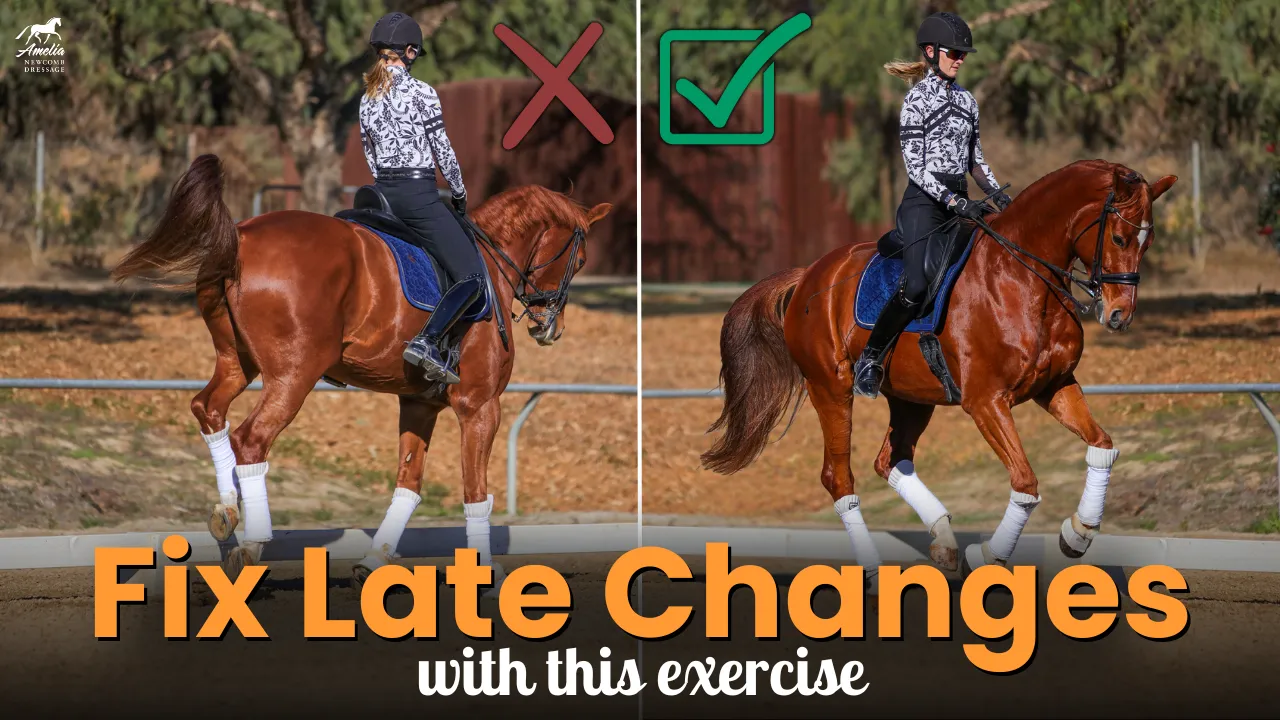How to Use Your Seat During Transitions
Using your seat effectively is key to achieving smooth, balanced transitions. Whether you’re moving from walk to halt or canter to trot, your seat plays a crucial role in communicating with your horse. Here Sue Martin explains how to refine your seat aids for different transitions.
1. Walk to Halt Transition
In a walk-to-halt transition, your seat should do most of the work:
- Engage Your Core: Gently pull your belly button toward your spine to create a subtle “stop” signal.
- Close Your Thighs: Apply gentle pressure with your thighs, wrapping them around the horse without gripping.
- Avoid Pulling: Use minimal rein aids to maintain softness in the horse’s jaw and neck. Pulling on the reins can result in hollowing and resistance.
2. Walk to Trot Transition
Your seat should remain passive during upward transitions:
- Follow the Motion: Stay relaxed and allow your seat to move with the horse’s rhythm.
- Activate with Your Legs: Apply a gentle squeeze with your legs to encourage forward movement.
- Release the Aid: Once the horse moves forward, stop applying your leg, and let your seat follow without interfering.
Mistake to Avoid:
- Over-pushing with your seat can confuse your horse and create tension.
3. Trot to Walk Transition
Downward transitions require more seat engagement:
- Engage Your Core and Back: Use your core to slow your movement and close your knees slightly to guide the horse to walk.
- Relax Upon Completion: As the horse transitions, release the aids to let them know they’ve done the right thing.
Mistake to Avoid:
- Using too much rein or tension in your seat can lead to resistance and an inverted frame.
4. Trot to Canter Transition
For canter transitions, your seat should guide without force:
- Stay Passive: Allow your legs to signal the canter. The inside leg remains at the girth, and the outside leg slides back slightly.
- Follow the Motion: Let your hips follow the canter rhythm once the transition is complete.
Mistake to Avoid:
- Driving with your seat or leaning forward can disrupt balance and cause the horse to invert.
5. Canter to Trot Transition
This transition requires subtle aids:
- Close Your Core: Engage your core muscles and slow your following motion.
- Maintain Balance: Keep your legs steady to encourage the horse to stay balanced during the transition.
- Relax Afterward: Once the horse transitions, relax your seat to follow the trot rhythm.
Mistake to Avoid:
- Leaning back excessively or pulling with the reins can cause tension and an abrupt transition.
Final Thoughts
Mastering transitions with your seat takes practice and patience. Focus on clear, subtle aids and always reward your horse for correct responses. With time, you’ll achieve seamless transitions that enhance your horse’s balance and confidence.
Happy Riding,
Amelia








































